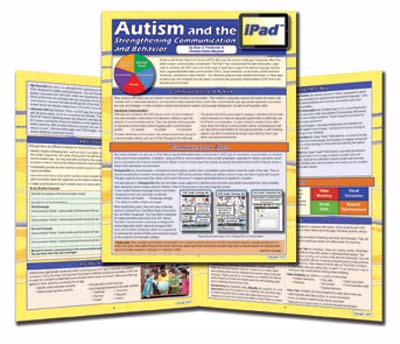From small rural schools to large urban ones, from preschool to high school, and from special education to general education classrooms, iPads are becoming a staple of many classrooms. Studies have shown that iPads facilitate student engagement and help students improve skills. A large, recently published study found a long list of benefits to students, including increasing motivation, fostering student learning and performance, nurturing creativity, facilitating student assessment, assisting with organization, improving pedagogical support, among others. In the blogosphere and on social media, educators enthusiastically share experiences and tips for making use of the iPad in the classroom.
 The iPad is an especially hot topic in the realm of special education, with countless potential benefits for students with disabilities. For the better part of three decades, computers have been used as powerful assistive technology tools. The highly portable, customizable touch-screen iPad has taken assistive technology to a whole new level. Thousands of specially designed iPad apps can help students with special needs in myriad ways, from increasing access to the curriculum to enhancing communication skills to improving behavior. But with all of the iPad’s features and options, educators need practical advice on how to get started with the iPad and how to use it to address particular student needs.
The iPad is an especially hot topic in the realm of special education, with countless potential benefits for students with disabilities. For the better part of three decades, computers have been used as powerful assistive technology tools. The highly portable, customizable touch-screen iPad has taken assistive technology to a whole new level. Thousands of specially designed iPad apps can help students with special needs in myriad ways, from increasing access to the curriculum to enhancing communication skills to improving behavior. But with all of the iPad’s features and options, educators need practical advice on how to get started with the iPad and how to use it to address particular student needs.
 Dr. Brian Friedlander, a school psychologist, professor of special education, and assistive technology blogger, has designed two quick-reference laminated guides to help teachers start using the iPad with special needs students quickly and easily: iPad: Enhancing Learning & Communication for Students with Special Needs, and Autism and the iPad: Strengthening Communication and Behavior.
Dr. Brian Friedlander, a school psychologist, professor of special education, and assistive technology blogger, has designed two quick-reference laminated guides to help teachers start using the iPad with special needs students quickly and easily: iPad: Enhancing Learning & Communication for Students with Special Needs, and Autism and the iPad: Strengthening Communication and Behavior.
Friedlander is also the author of the laminated guides Assistive Technology: What Every Educator Needs to Know, and Instructional Technology for 21st Century Skills.








